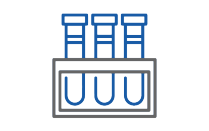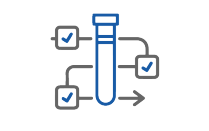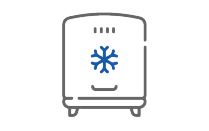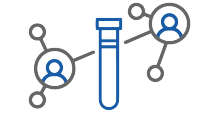BIOREPOSITORY SERVICES FOR DISCOVERY & GROWTH
Driving scientific discoveries with experts and facilities
The University at Buffalo's biorepository program is an enterprise-wide resource, serving the research community and industry partners through centralized and standardized services for the collection, processing, management and distribution of biological assets.

Advancing discovery and innovation in healthcare
The UB biorepository enables precision medicine and translational research through comprehensive sample accession, storage, QC and logistics. Our enterprise-level digital chain of custody and state-of-the-art automated systems help pharma and biotech attain their research goals.
The biorepository program supports four main operations to ensure complete digital and physical chain of custody:

Collection
Through advanced barcode processing and scanning, each sample is tracked at the time of collection, and data is transferred into the biorepository’s laboratory information management system.

Processing
Automated pre-processing (i.e. blood fractionation, pathology services) and processing (i.e. nucleic acid extraction, PBMC processing) help minimize variation of primary biosamples and their analytes for banking.

Storage
All storage environments are highly regulated, monitored 24/7/365, supported by complete and continuous backup power and are supported by redundant freezers for uninterrupted storage.

Distribution
Due to automated sample storage systems and streamlined processes, the UB biorepository can support high-volume sample requests on a moment’s notice.
Additional life sciences resources available to our partners

Take your research to the next level with state-of-the art instrumentation and expertise in our Genomics and Bioinformatics Core.

Fuel your research with state-of-the art instrumentation and expertise in proteomics and biopharmaceutical analysis in our Proteomics & Bioanalysis Core.

Access infrastructure and experts in software development, artificial intelligence and data analytics at our Center for Computational Research.
